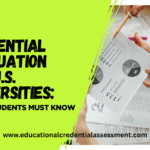
As one of the most sought-after destinations for education and employment, the United States has long been a beacon for international students and skilled professionals. However, recent changes to US visa rules are set to reshape the experiences of those looking to study or work in the country. Whether you’re planning to pursue higher education or embark on a professional journey in the US, understanding these updates is crucial.
Understanding the Key Changes
In 2024, several significant updates have been made to various US visa categories, impacting both students and professionals. These changes range from fee increases and stricter regulations to some relaxations aimed at easing certain processes. Here’s a breakdown of the most important changes you need to be aware of:
1. H-1B Visa: Substantial Fee Increases
The H-1B visa, essential for companies hiring foreign workers in specialty occupations, has seen dramatic fee hikes:
- Registration Fee: Increased from a mere $10 to $215 per beneficiary, marking a staggering 2150% rise.
- Application Fee: Now set at $780 for paper filings, up from $460, representing a 70% increase.
These fees do not include additional costs such as the Asylum Program Fee, Fraud Prevention and Detection Fee, and other mandatory charges. These increases could pose a financial challenge for many applicants and their employers, potentially impacting the hiring of international talent.
2. Green Card Applications: Higher Costs Ahead
The process of applying for a green card has also become more expensive:
- General Filing for I-130 Petition: The cost has risen to $675 for paper filings and $625 for online filings, up from $535 previously.
- New Asylum Program Fee: A new $600 fee is being introduced for petitions related to non-immigrant workers and certain immigrant petitions.
These changes mean that those seeking permanent residency in the US will need to prepare for higher financial outlays, adding to the overall burden of immigrating.
3. Streamlined Processes and Enhanced Security Measures
To cover its operational costs and modernize infrastructure, the US Citizenship and Immigration Services (USCIS) has implemented new measures affecting student visas and employment authorization:
- Tighter Scrutiny for Student Visas: Applicants for F, M, and J visas must now provide accurate passport information when scheduling appointments. This change aims to improve the accuracy of data and reduce errors in the visa appointment process.
- EAD Extension Relief: In a positive development, the USCIS has relaxed eligibility criteria for Employment Authorization Documents (EADs), commonly known as work permits, for some applicants. The maximum validity of EADs has been extended to five years, offering more stability and reducing the frequency of renewal applications.
Impact on Practical Training Opportunities for Students
For international students, practical training opportunities in the US provide valuable work experience. Understanding the recent changes to these opportunities is key to navigating the new landscape.
Optional Practical Training (OPT)
- Pre-Completion OPT: Allows F-1 students to work part-time while studying, gaining practical experience.
- Post-Completion OPT: Grants up to 12 months of work authorization after graduation.
Curricular Practical Training (CPT)
- CPT: Provides full-time work opportunities that are directly related to a student’s curriculum, connecting classroom learning with real-world applications.
Changes in OPT Rules
While the core structure of OPT and CPT remains intact, there have been minor changes:
- STEM OPT Extension: The 24-month extension for STEM students is still in place.
- Employer Requirements: The requirement for employers to participate in E-Verify has been removed. However, employers must still provide formal training plans for STEM OPT students.
- Reporting Requirements: Reporting frequency has been reduced from every 6 months to annually.
- Unemployment Allowance: The total allowable unemployment period has increased from 150 to 180 days.
- Fees: The fee for the STEM OPT extension application has increased to $470 for online filings and $520 for paper filings.
Navigating the New US Visa Landscape
The recent changes to US visa rules reflect a significant shift in the country’s approach to immigration and student visas. For international students and professionals, staying informed and prepared is more important than ever. Whether it’s understanding new fees, adapting to updated processes, or exploring new opportunities under revised regulations, being proactive is key to making the most of your US journey.
Stay tuned to our blog for more updates and detailed analyses on educational and immigration policies that could affect your plans to study or work in the US.














